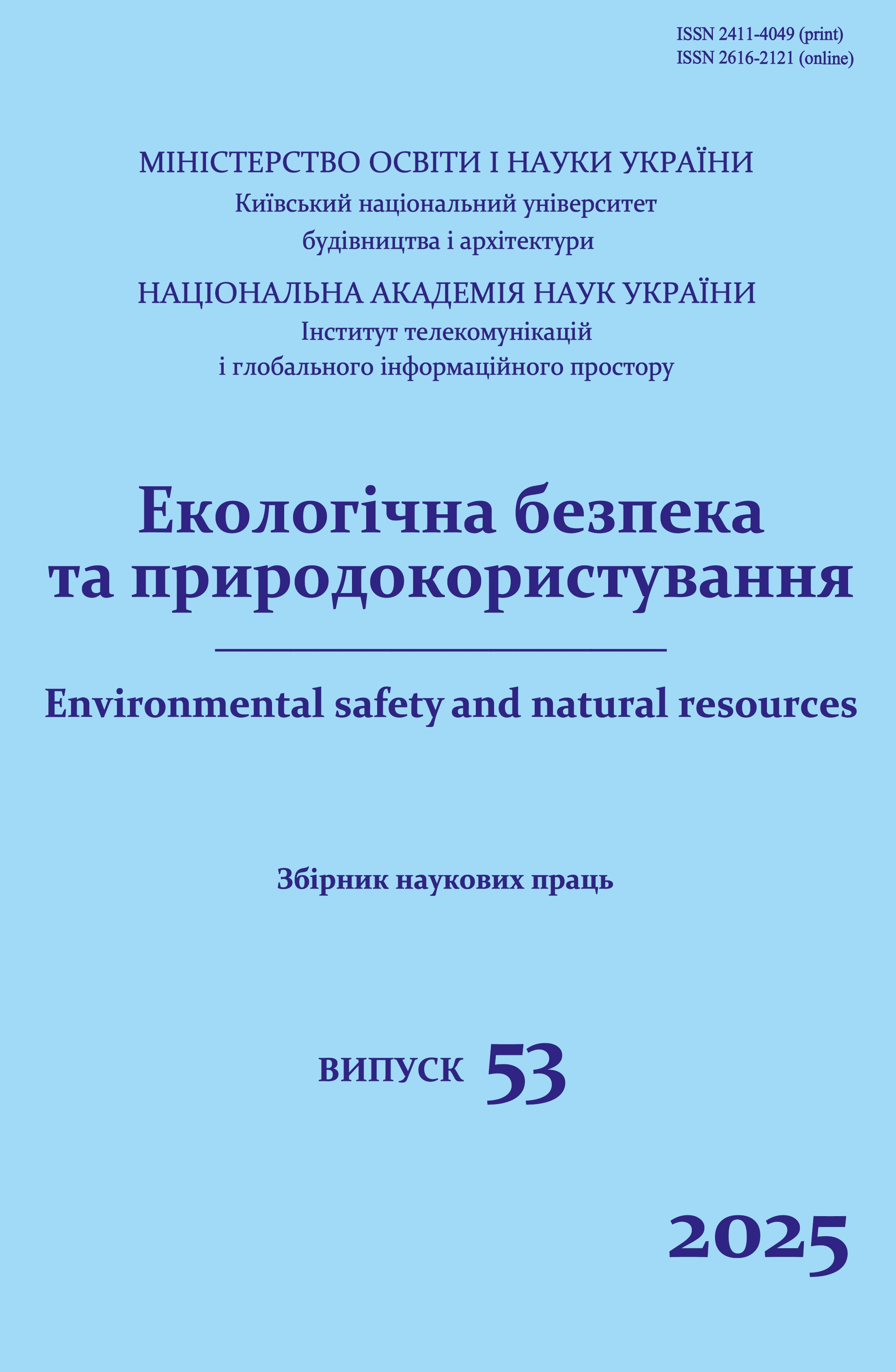Hygienic characteristics of welding methods and welding materials
DOI:
https://doi.org/10.32347/2411-4049.2025.1.82-94Keywords:
arc welding, hygienic assessment, aerosol, emission level, chemical composition, submerged arc welding, mechanized weldingAbstract
The purpose of this work is to assess the hygienic characteristics of various arc welding methods and welding materials and to identify the main factors that affect the degree of risk of hazardous effects of welding aerosol on the body of welders. The assessment methodology was based on the study of the levels of welding aerosol release and its chemical composition depending on the content of components in welding materials that intensify the process of aerosol formation, welding modes and specific properties of the welding methods themselves. The study made it possible to identify welding materials, the use of which is accompanied by the highest levels of welding aerosol release during manual arc welding with covered electrodes, submerged arc welding and mechanized welding. The results obtained make it possible to choose safer welding materials in terms of hygiene for the above-mentioned welding methods. Also, based on the obtained research results, it becomes possible to form substantiated recommendations on the choice of measures and means of protecting welders and auxiliary personnel from harmful factors accompanying welding processes. The novelty of the research lies in the first comprehensive analysis of the hygienic characteristics of arc welding methods and welding materials. Prospects for further research include the development of innovative means of collective and individual protection, as well as the study of the long-term impact of harmful factors on the body of workers. The main limitation is the local nature of the experiments, which requires expanding the scale of the study to confirm the correlation of the results obtained for other welding materials of both domestic and foreign production.
References
Martín, Ó., & De Tiedra, P. (2022). Advances in the control and improvement of quality in the resistance spot welding process. Metals, 12(11), 1810. https://doi.org/10.3390/met12111810
Periyasamy, P.S., Sivalingam, P., Vellingiri, V.P., Maruthachalam, S., & Balakrishnapillai, V. (2024). A review of traditional and modern welding techniques for copper. Welding International, 38(10), 673-68. https://doi.org/10.1080/09507116.2024.2413386
Knott, P., Csorba, G., Bennett, D., & Kift, R. (2023). Welding Fume: A Comparison Study of Industry Used Control Methods. Safety, 9(3), 42. https://doi.org/10.3390/safety9030042
Quecke, E., Quemerais, B., & Hashisho, Z. (2023). Review of welding fume emission factor development. Annals of Work Exposures and Health, 67(6), 675-693. https://doi.org/10.1093/annweh/wxad024
Mahadevan, R., Jagan, A., Pavithran, L., Shrivastava, A., & Selvaraj, S. K. (2021). Intelligent welding by using machine learning techniques. Materials Today: Proceedings, 46, 7402-7410. https://doi.org/10.1016/j.matpr.2020.12.1149
Klimecka-Tatar, D., Ulewicz, R., & Ingaldi, M. (2023). Minimizing occupational risk by automation of the special processes-based on occupational risk assessment. Procedia Computer Science, 217, 1145-1152. https://doi.org/10.1016/j.procs.2022.12.313
Pokhodnya, I. K., Gorpenyuk, V. N., Milichenko S. S. et al. (1990). Metallurgiya dugovoi svarki: Protsessy v duge i plavlenie elektrodov. Kiev: Nauk. dumka [in Russian].
Pro zatverdzhennia hihienichnykh rehlamentiv dopustymoho vmistu khimichnykh i biolohichnykh rechovyn u povitri robochoi zony (Nakaz MOZ Ukrainy). № 1596 (2020). URL: https://zakon.rada.gov.ua/laws/show/z0741-20#Text [in Ukrainian].
Press, H. (1981). Formation des oxydes d`azote lors du soudage aux gaz. Mesures pour la prevention d`atteintes a la sante. Soudage et Techniques Connexes, 516, 207-212.
Sipek, L. Emission of gases pollutants during GTA Welding of Yorcalbro Brass. (1988). Intern. Inst. of. Welding; Doc. VIII-1443–88, (рp. 16).
Sipek, L. & Smars, E. (1989). Ozone and nitrogen oxides in gas shielded arc welding. Institute International de la Soudure (IIS/IIW), doc VIII-1486-89.
DSTU EN ISO 15011-4:2022. (2022). Zdorovia ta bezpeka pid chas zvariuvannia ta sumizhnykh protsesiv. Laboratornyi metod vidbyrannia prob dymu ta haziv. Chastyna 4. Tablytsi danykh schodo dymu. Kyiv: DP “UkrNDNTS” [in Ukrainian].
Levchenko, O.G. (2015). Svarochnye aerozoli i gazy: protsessy obrazovaniya, metody neitralizatsii i sredstva zashchity. Kiev: Naukova dumka [in Russian].
Levchenko, O.G. & Metlitskii, V.A. (2003). Glava 6: Okhrana truda pri svarke. Svarnye stroitelnye konstruktsii: Sprav. izd. v 3-kh tomakh (pp. 293-319). K.: IES im. Ye.O. Patona [in Russian].
Weman, K. (2012). Manual metal arc (MMA) welding with coated electrodes. Woodhead Publishing Series in Welding and Other Joining Technologies, Welding Processes Handbook (Second Edition), Woodhead Publishing, 99-103. https://doi.org/10.1533/9780857095183.99
Murugan, S.S., & Sathiya, P. (2024). Analysis of welding hazards from an occupational safety perspective. Vietnam journal of science, technology and engineering, 66(3), 63-74. http://dx.doi.org/10.31276/VJSTE.2023.0007
Saxena, V. (2023). Occupational Hazards and Safety Challenges in Welding Activity. Indian Welding Journal, 56(1). https://doi.org/10.22486/iwj.v56i1.218496
Li, Y., Liu, W., Chen, Z., Jiang, L., & Ye, P. (2022). A novel approach for occupational health risk assessment and its application to the welding project. Journal of Cleaner Production, 378, 134590. https://doi.org/10.1016/j.jclepro.2022.134590
Van der Mee, V. (2021). Welding exposure scenarios. Welding in the World, 65(12), 2397-2401. https://doi.org/10.1007/s40194-021-01182-4
Dhas, J. E. R., Lewise, K. A. S., & Laxmi, G. (2022). Submerged arc welding process parameter prediction using predictive modeling techniques. Materials Today: Proceedings, 64, 402-409. https://doi.org/10.1016/j.matpr.2022.04.757
Kah, P., & Martikainen, J. (2013). Influence of shielding gases in the welding of metals. The International Journal of Advanced Manufacturing Technology, 64, 1411-1421. http://dx.doi.org/10.1007/s00170-012-4111-6
Downloads
Published
How to Cite
Issue
Section
License
Copyright (c) 2025 Oleg Levchenko, Yury Polukarov, Olena Zemlyanska

This work is licensed under a Creative Commons Attribution 4.0 International License.
The journal «Environmental safety and natural resources» works under Creative Commons Attribution 4.0 International (CC BY 4.0).
The licensing policy is compatible with the overwhelming majority of open access and archiving policies.

